One of the delights of travelling in Asia is the street markets full of exotic Asian fruit. Fruit in Asia comes in an array of shapes, tastes and sizes. And they also have intriguing names like snake fruit and Buddha’s hand. Some types of fruit are eaten raw, used as an ingredient in a tasty dish, to make a healthy fruit juice or an exotic cocktail.
How about a lychee martini or a dragon fruit daiquiri? Asian fruit comes in vibrant colours, with unusual tastes and textures. So, check out our Asian fruit bible for information and inspiration.
A to Z of Asian Fruit
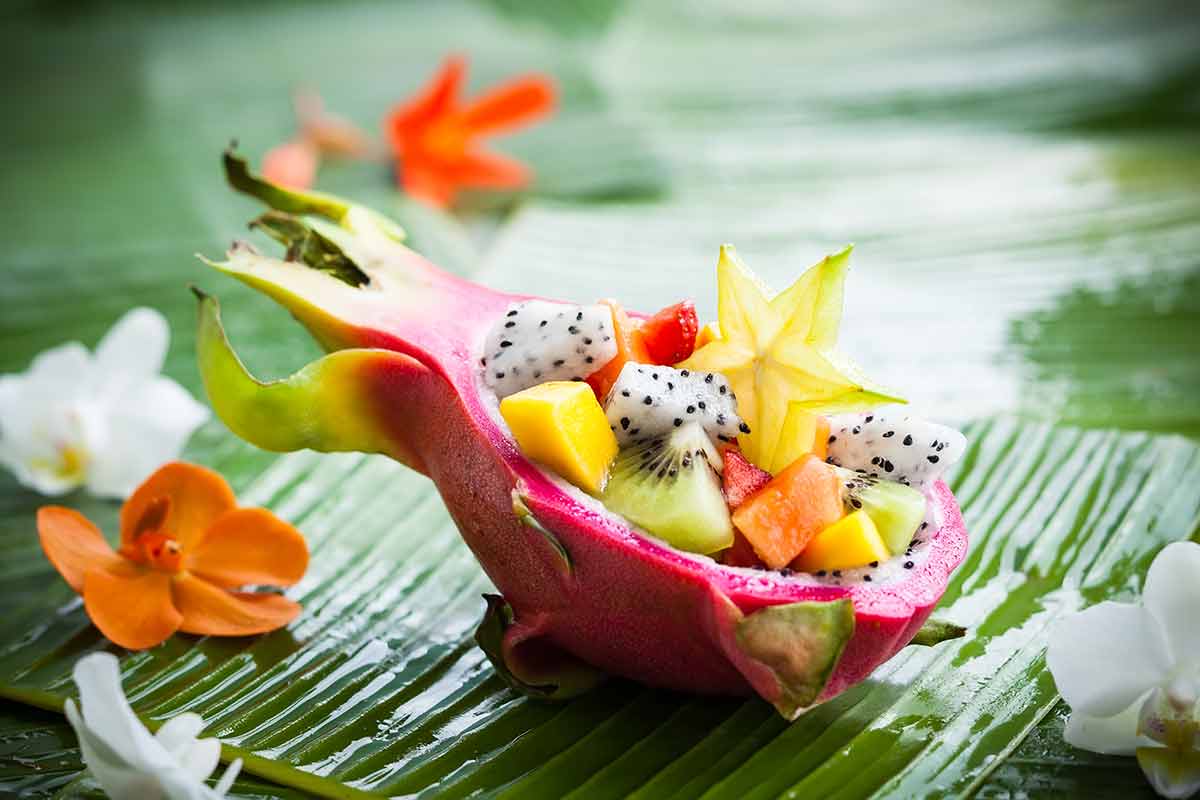
33 Types Of Asian Fruit To Taste On Your Next Trip
1- Asian Pears
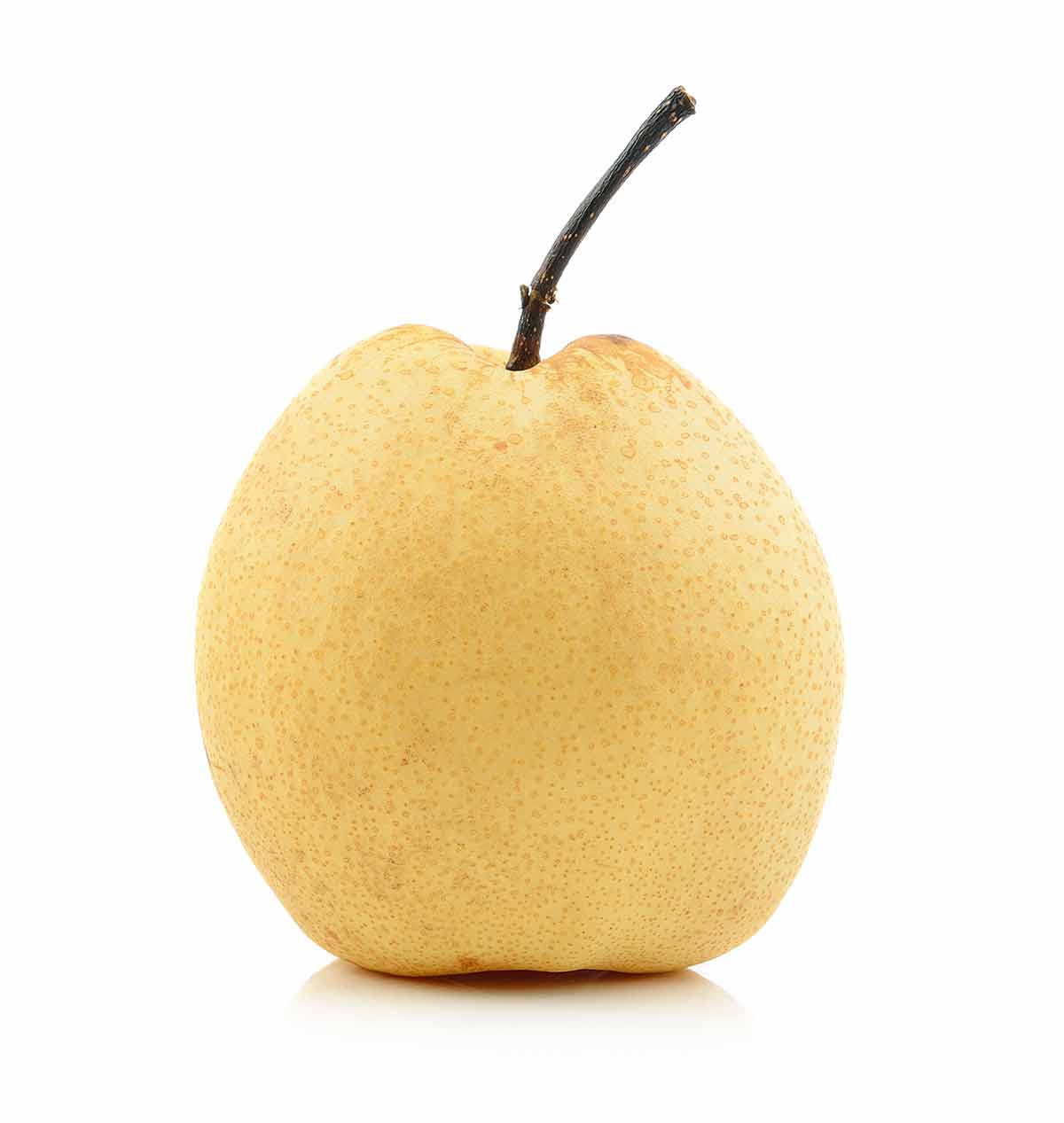
Asian pears (Pyrus pyrifolia) are a delicious, sweet fruit that can be enjoyed either fresh or dried.
These Asian fruit trees originated in China and are commonly grown in Asia and Europe, so the Asian pear is sometimes called the Chinese, Japanese or Korean.
Pear trees are a yellow Asian fruit that is a symbol of spring in Asia.
Asian pears are round with a slightly pointed end, and they usually have smooth skin that is pale yellow or greenish-white with firm, juicy flesh.
The taste of an Asian pear can vary depending on the variety, but most are sweet with a mild flavour with a crisp texture.
This Asian fruit is usually eaten fresh and not usually used in fruit salads or for baking.
Blemishless Asian pears can be expensive and are given as presents or eaten as a special treat.
2- Buddha’s hand
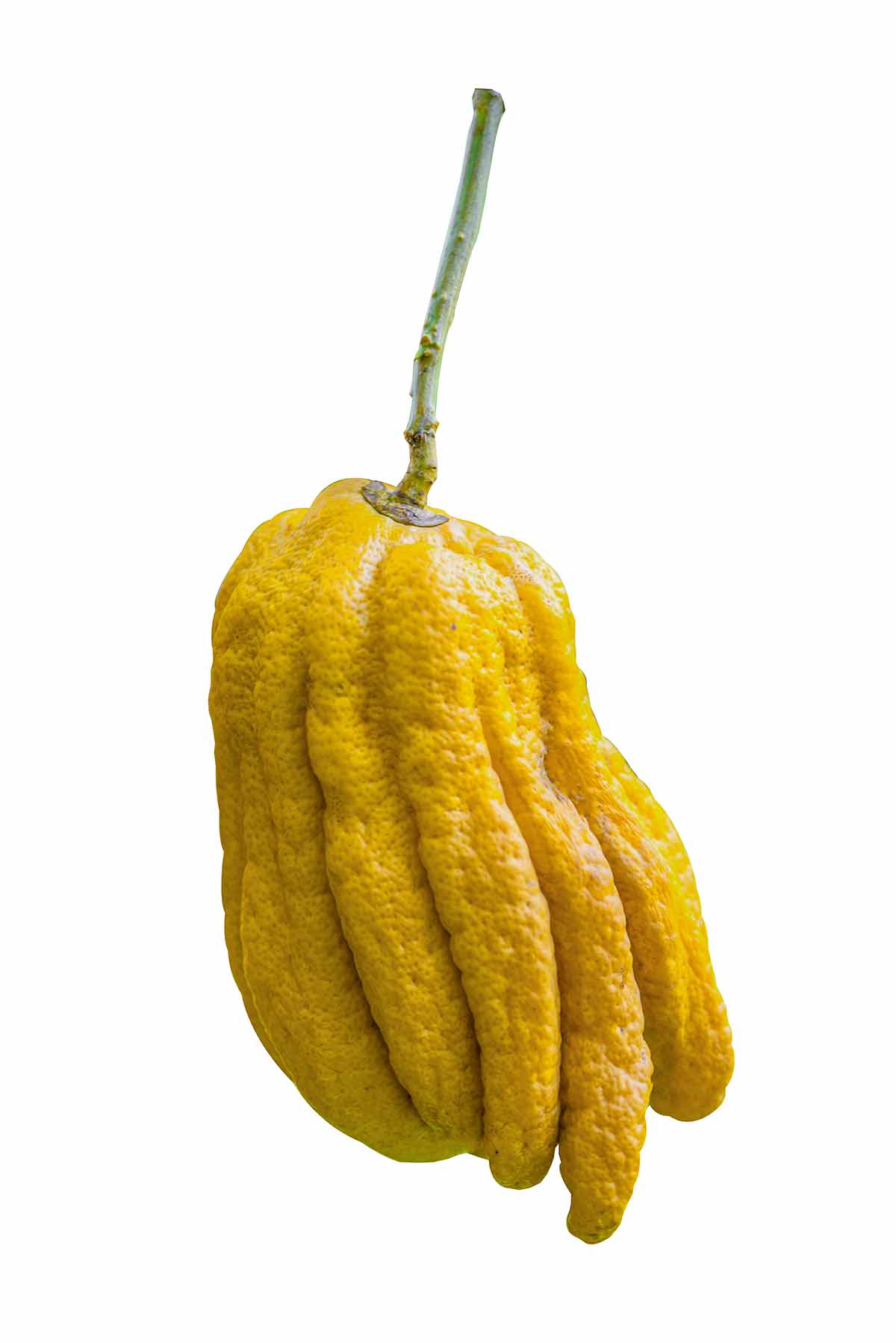
Buddha’s hand (Citrus medica var. sarcodactylis) is an Asian citrus fruit with a fragrant aroma and used in salad dressings, baked goods and preserves.
Because of its unique shape, it’s sometimes used as a garnish.
Buddha’s hand has a strong lavender scent, is also high in Vitamin C and other nutrients, making it a healthy option to eat.
The fruit has no seeds, minimal flesh and grows on a tree with a fingered canopy that is up to 12 feet (3.6 m) high.
It has a flat shape that looks like lumpy lemon fingers and is also known as Fingered Citron in Japan and China.
This Asian fruit is eaten symbolises longevity, wealth and happiness, so it’s eaten during New Year celebrations.
3- Breadfruit
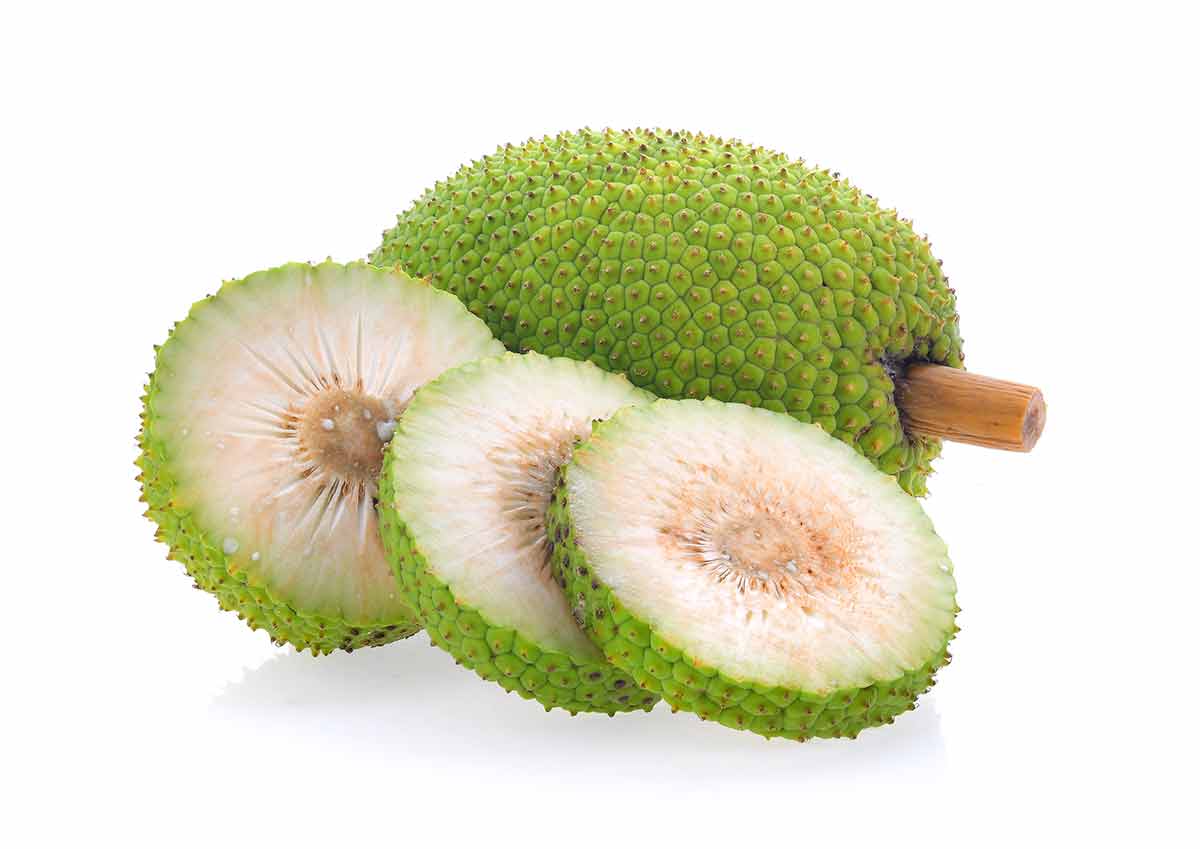
If you’re a fan of exotic fruits, you’ll definitely want to try breadfruit (Artocarpus altilis).
This delicious fruit is often compared to potato or yam and it has a slightly sweet nutty taste.
Cooked breadfruit tastes and has a similar texture to potatoes while overripe breadfruit has a custard bread-like taste and is mushy and soft.
The fruit looks similar and is related to durian and jackfruit, which are also popular in Asia and the South Pacific.
Breadfruit is high in carbohydrates and protein, gluten-free and low in fat.
It’s loaded with nutrients and has more potassium than bananas.
4- Chinese Bayberry
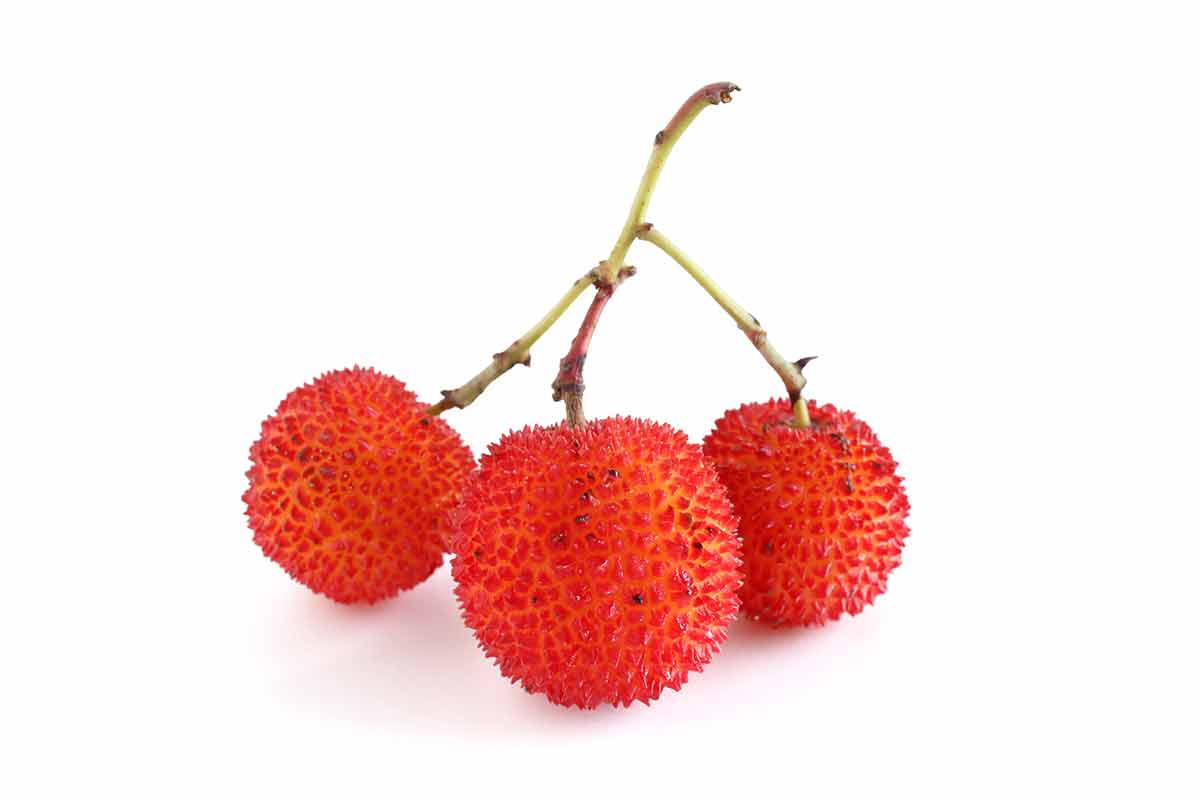
Chinese Bayberry (Morella rubra) is an exotic Asian fruit with a tart yet sweet flavour, somewhere between a blackberry and a raspberry.
The purple fruit looks like raspberries and has a cherry-like pip and is also known as waxberry or yangmei.
Popular in China and rich in antioxidants, this Asian fruit is often used as a traditional Chinese remedy.
5- Coconut
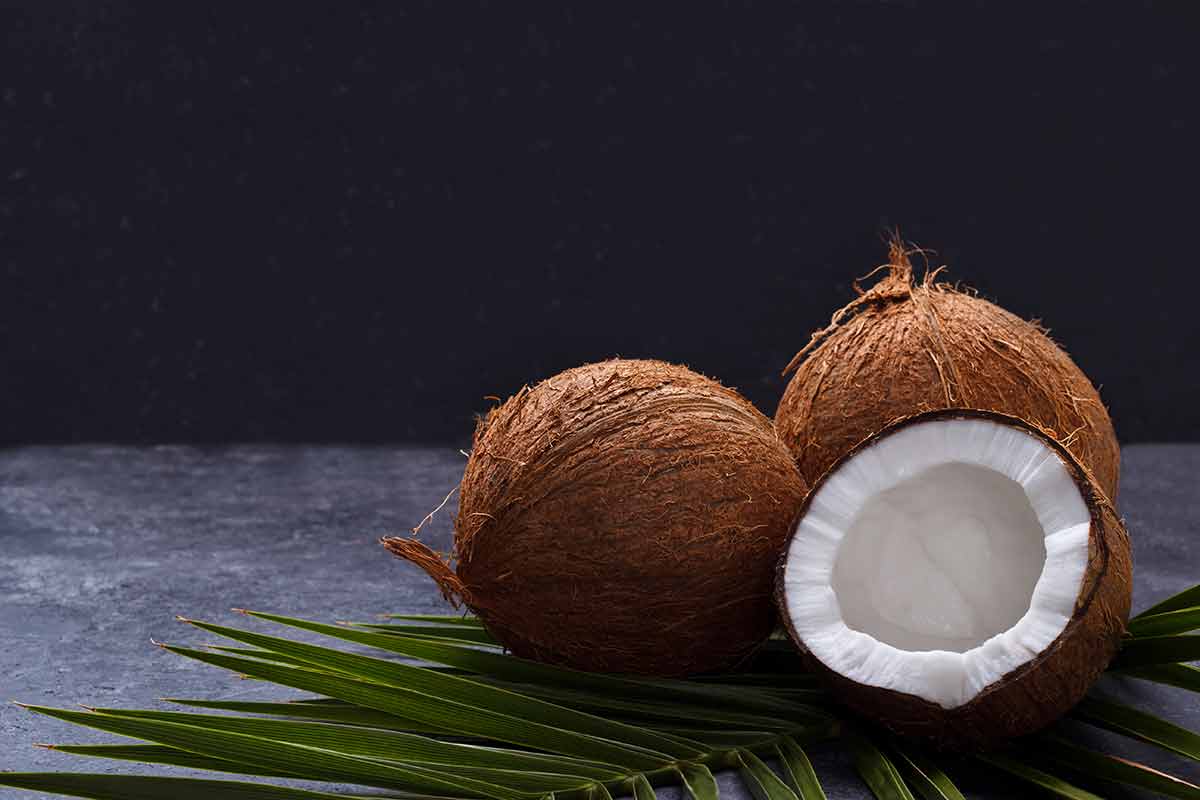
If you’re a fan of coconut (Cocos nucifera), you’ll be excited to know that the flesh is delicious and has health benefits.
Coconut flesh is high in fat and is a great source of fibre, vitamins C and E, and minerals like potassium and magnesium.
Coconut flesh has a sweet, nutty, vanilla flavour and the juice is drunk directly out of coconut or used for making sweet drinks.
The coconut palm originated in Indonesia or Malaysia and each tree produces around 100 coconuts a year.
Coconuts are covered in a fibrous husk and have an ellipsoid or ovoid shape.
6- Dragon Fruit
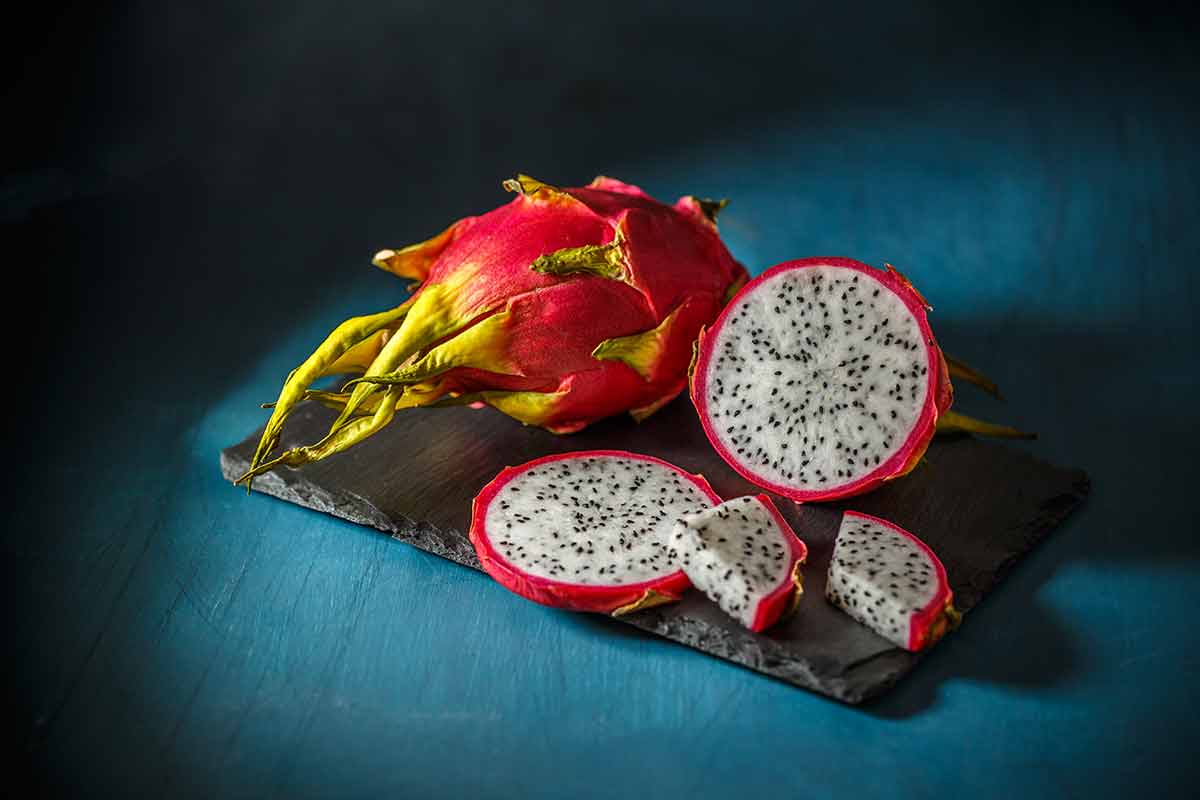
Like their name, dragon fruit (Selenicereus undatus) are beautiful oval yellow and red-skinned fruit with large green scales.
Also known as strawberry pear or pitahaya and grows on the Hylocereus cactus plant that is native to Central America and grows in many parts of Asia.
The white or red flesh is sweet and tart, with black seeds.
It’s commonly eaten in many countries in Asia raw, in salads, smoothies or as part of a fruit bowl.
7- Durian
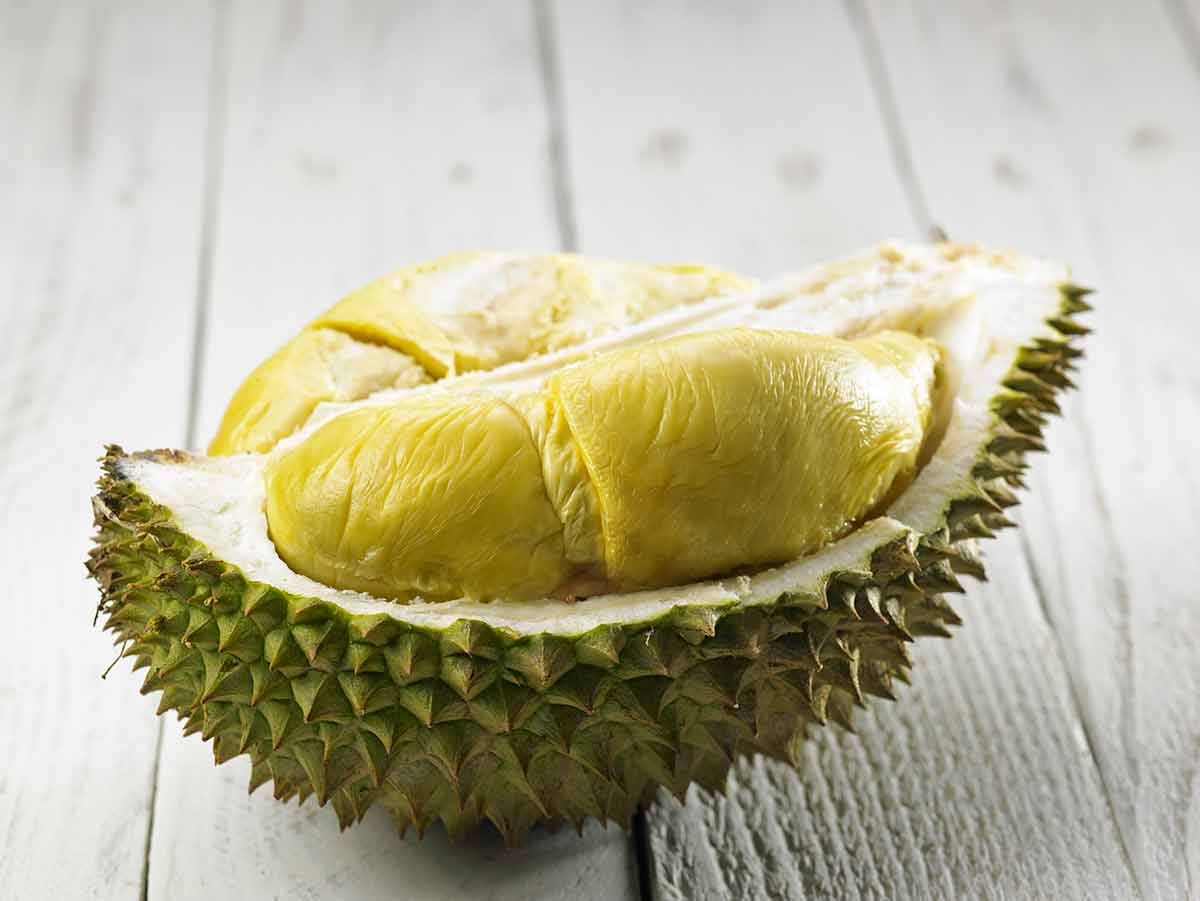
The most distinctive feature of durian (Durio zibethinus) is its pungent aroma of ripe fruit that some people describe as smelly socks.
The powerful aroma lingers so long that Singapore banned eating durian on the subway line.
The fruit has a greenish-brown exterior with spikes and is about the size of a football.
Durian is a spiky Asian fruit that is a staple in Southeast Asia, especially Malaysia and Singapore, where it’s known as the ‘king of fruits’.
8- Jujube
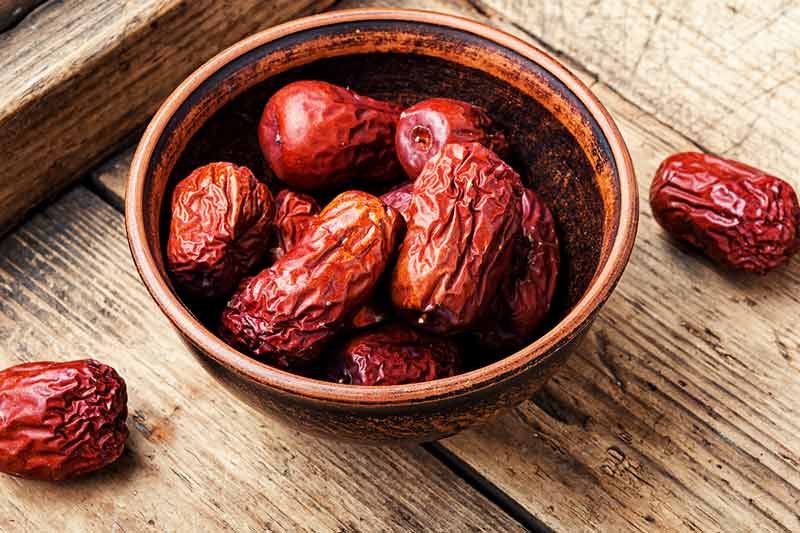
Jujube (Ziziphus jujuba) or Chinese dates are native to Southern Asia and popular worldwide.
These small round fruit have wrinkly dark red skin and are also known as red dates.
Unlike most other Asian fruit, jujube is not usually consumed fresh but dried and candied.
Smoked jujube is popular in Vietnam, while a sweetened tea syrup with jujube fruit is standard in Korea and China. Jujube tea is sold in cans or as teabags.
9- Guava
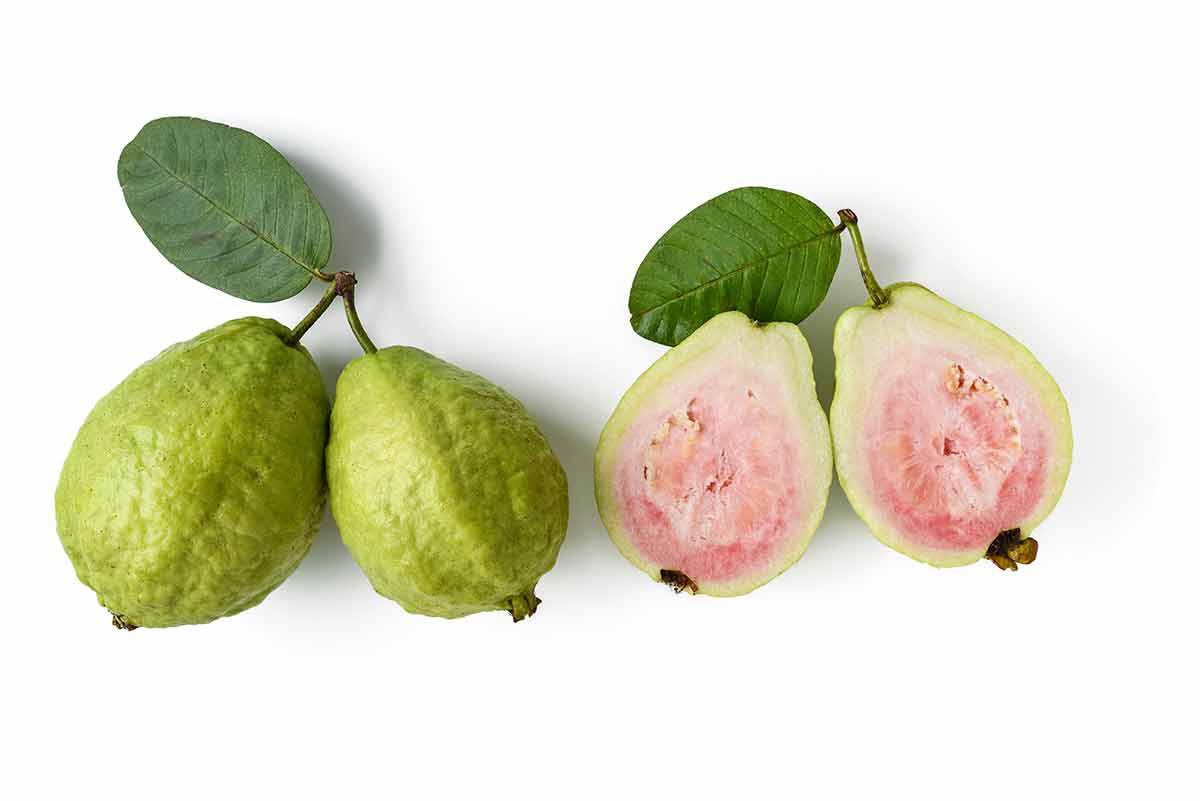
Guavas (Psidium guajava) are a favourite Asian fruit with soft skin that is pink, red and white.
Guava is a tropical fruit with soft pink, red or white skin that starts as a small white flower with petals and stamens.
There are different types of guava, and the fruit is popular around the world, although the top three guava producers are India, China and Thailand.
The fruit is high in vitamin C, can be eaten raw and is excellent for making jam, while its leaves have medicinal properties used in traditional medicine.
10- Goji
Goji berries (Lycium barbarum) or wolfberries are tiny red berries packed with antioxidants and are native to China and grow in many other parts of Asia.
They are packed with vitamin C and antioxidants, full of flavour and used as supplements, either powdered or dried, to make juice.
In China, the goji berry is both a herb and a fruit.
It’s used in traditional Chinese, Korean and Japanese medicine to improve kidney and liver health.
Also read:
For more things to do in Asia see:
11- Jackfruit
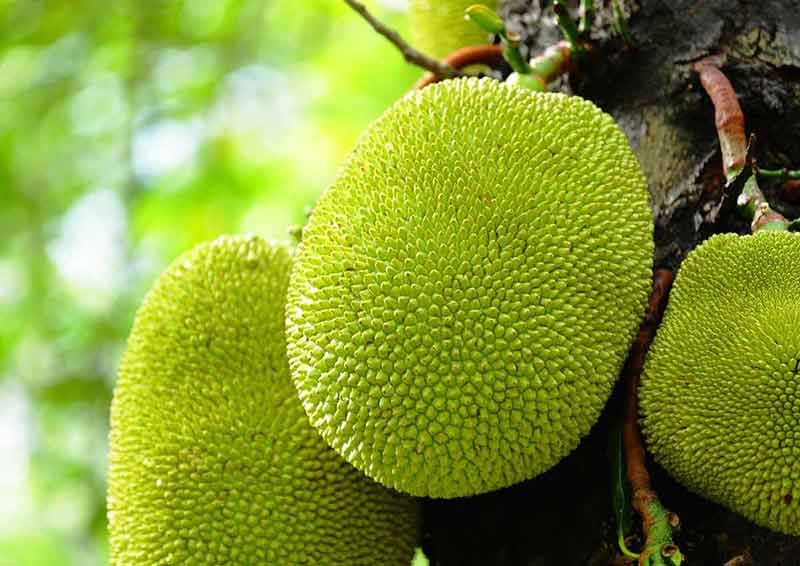
Jackfruit (Artocarpus heterophyllus) is native to South Asia and the Indian subcontinent.
India is the world’s largest jackfruit producer and in India, it’s eaten fresh, with rice, dried or in curries.
The unripe fruit has a meat-like texture that some chefs in the USA and Europe use as a meat alternative.
The jackfruit is one the largest fruit in the world, some measuring up to 40′ inches long and some can weigh up to 100 lbs.
A remarkably fragrant and exotic fruit, its flesh is starchy and fibrous and is high in vitamin B, protein and potassium.
12- Japanese Persimmon
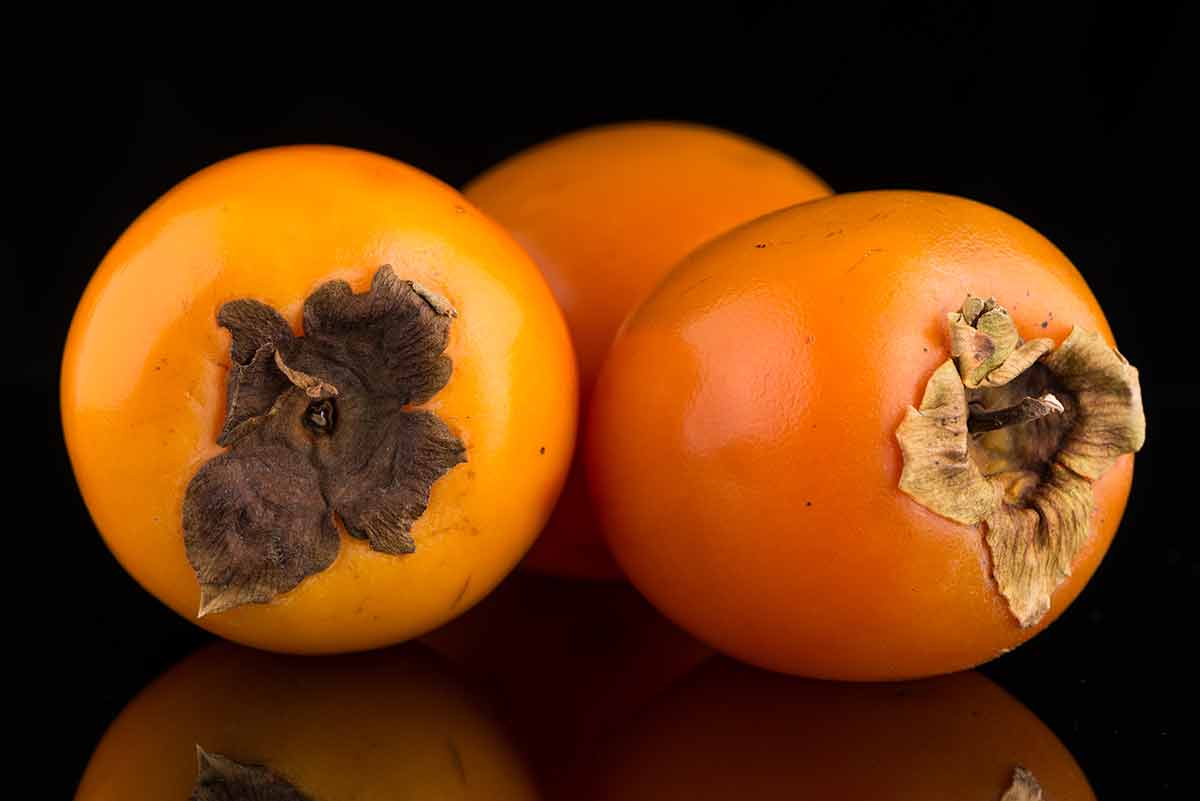
A small yellow, orangey red-coloured fruit that looks like a tomato, Japanese persimmon (Diospyros kaki) are sweet and tangy.
Japanese persimmons are among the oldest cultivated plants in Asia and are commonly grown in Japan and China, used as medicine and food.
Persimmons are native to China, India, Indochina and were brought to Japan during the 7th century and Korea in the 14th century.
These days, there are over 2000 varieties and China, Japan and South Korea are top producers of persimmons.
Representing luck and longevity, this Asian fruit is used during New Year celebrations.
They are a source of vitamins A and C, antioxidants and manganese, which helps the blood to clot.
They are eaten raw in smoothies, salads, oats, or cereal and as substitutes for apples when making desserts or jam.
13- Kiwi fruit

Kiwifruit (Actinidia deliciosa) or Chinese gooseberry originally grew wild in China and was introduced to New Zealand in 1904, when it was named after the New Zealand national bird.
This edible berry grows on vines, is oval, with brown skin and is about the size of a large hen’s egg.
They are low calorie, and the average kiwi fruit has twice the vitamin C of an orange.
Although most people eat the green flesh, the outer skin is also edible and packed with nutrients.
Around 400 varieties of kiwifruit are grown in China.
14- Kumquat
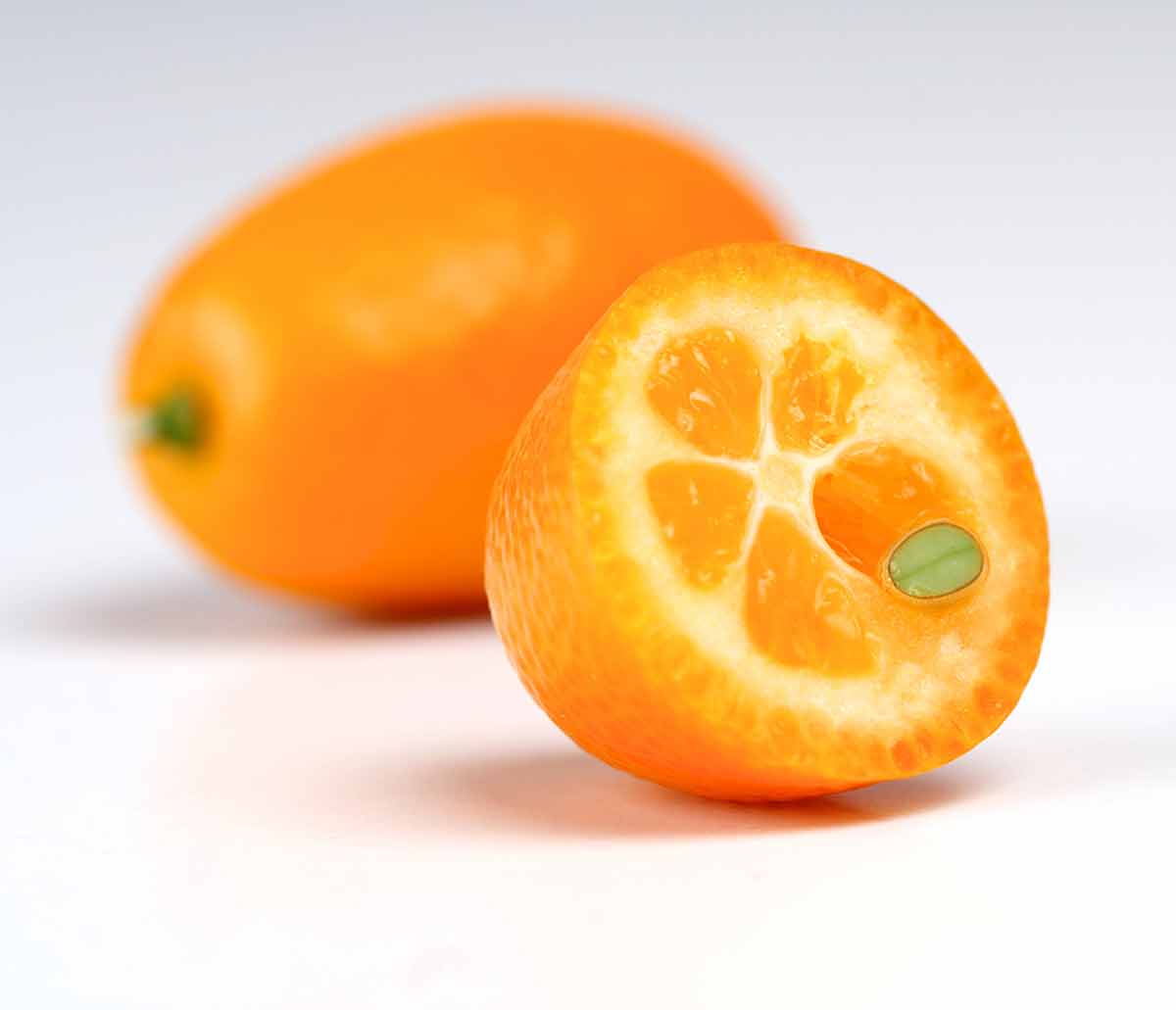
Kumquats (genus Fortunella) are edible, round or oblong citrus fruit the size of an olive.
Native to China, kumquats is an Asian fruit commonly used in other countries, including Taiwan, Japan and India.
The Cantonese word means ‘golden orange’ or ‘golden tangerine.’
The tart fruit is used in Asian cooking and can be eaten fresh or pickled for jams and sauces.
15- Langsat
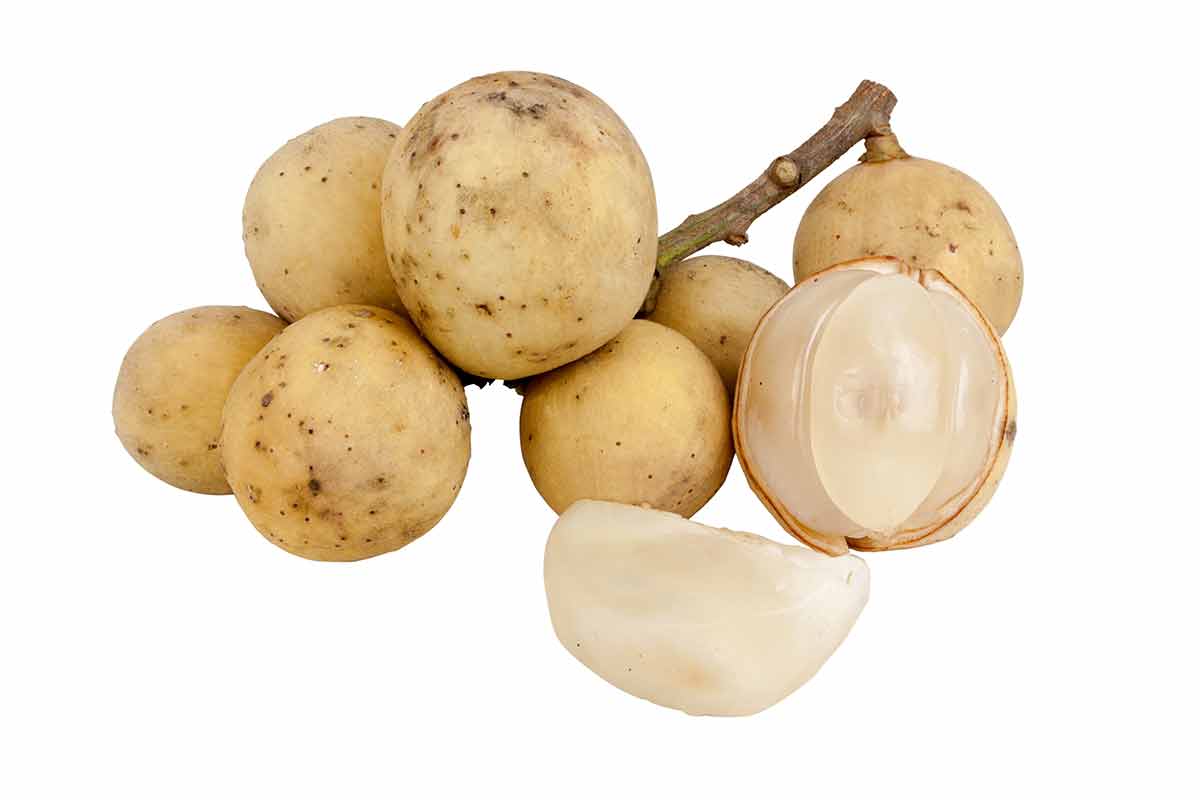
Langsat (Lansium domesticum) or longkang or duku are small oval fruit native to Southeast Asia.
They are about the size of a small potato and have thin grey-white skin.
The fruit is sweet and creamy, tangy and slightly bitter.
They are usually eaten fresh, however, in Malaysia, they are skinned and bottled in syrup, while in the Philippines, seedless segments are frozen in syrup.
16- Longan
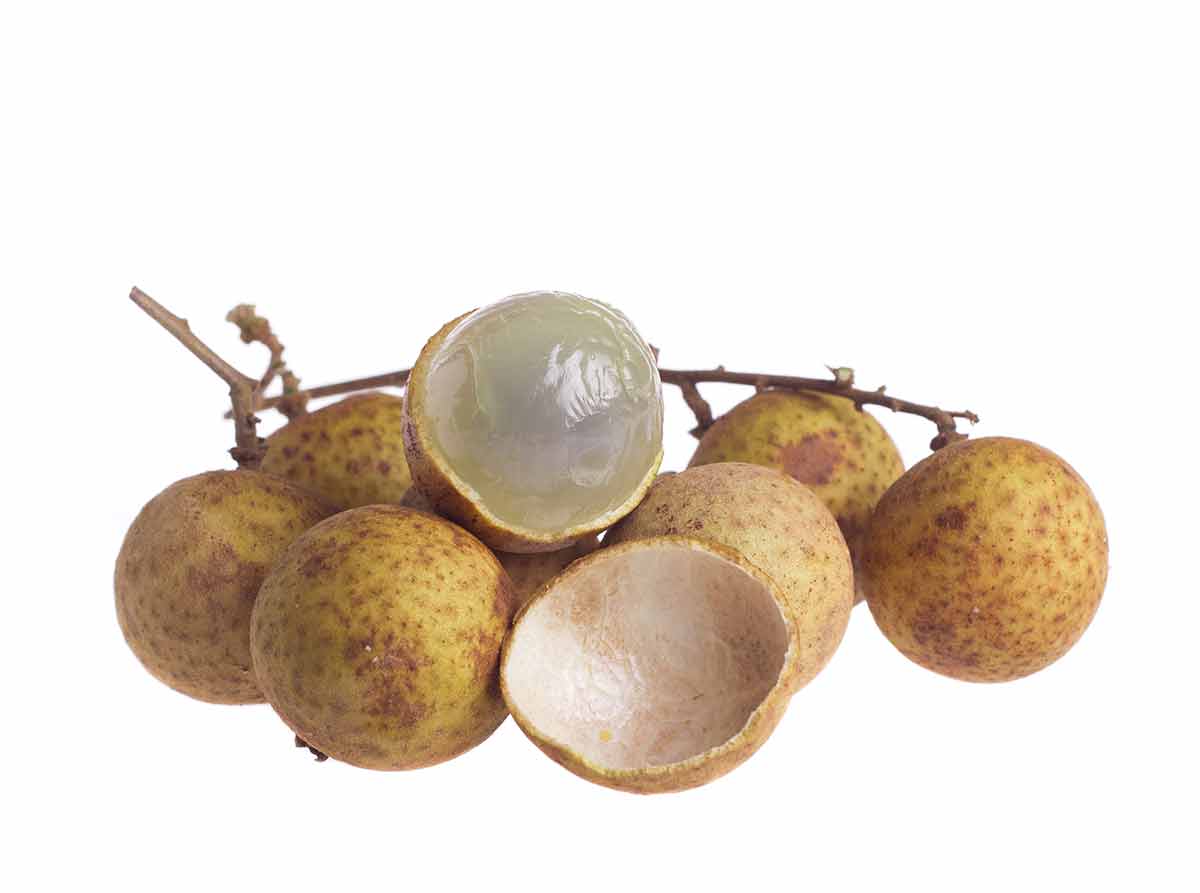
Longans (Euphoria longana), also known as the ‘eye of the dragon’ is native to China and Myanmar and is grown in Thailand, China, Taiwan, India and Vietnam.
The brown fruit grows on a tree with pale yellow flowers.
The juicy white flesh surrounds a black seed and is as sweet to eat as a grape.
17- Loquats
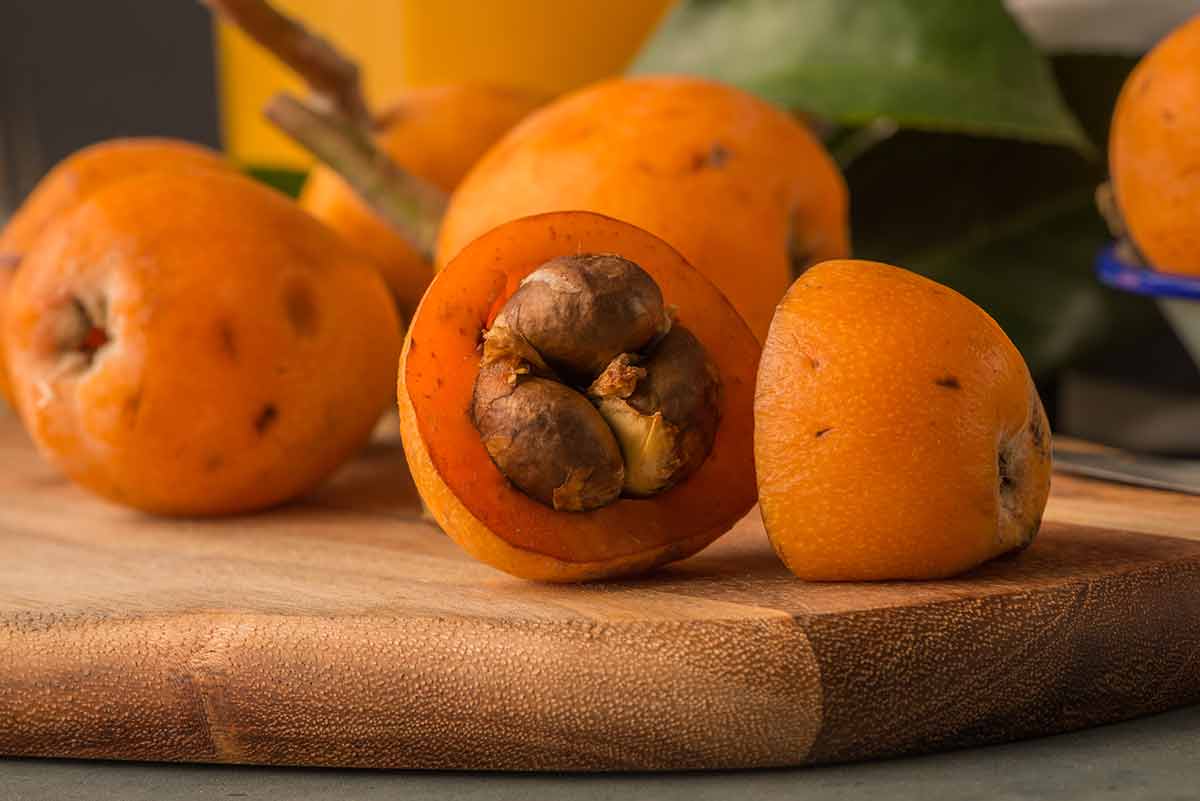
The loquat (Eriobotrya japonica), also known as Japanese medlar, is a large evergreen shrub that is a member of the rose family.
Native to China, loquats were introduced to Japan over 1,000 years ago and developed into a highly valued plant seen in gardens.
Loquats are also grown commercially for their orange fruit and leaves, used to make tea.
Loquat fruit is small and tart fruit with white, orange, pink or red skin and grows in round clusters.
They can be eaten raw or in a dessert or as a salad dressing.
18- Lychee
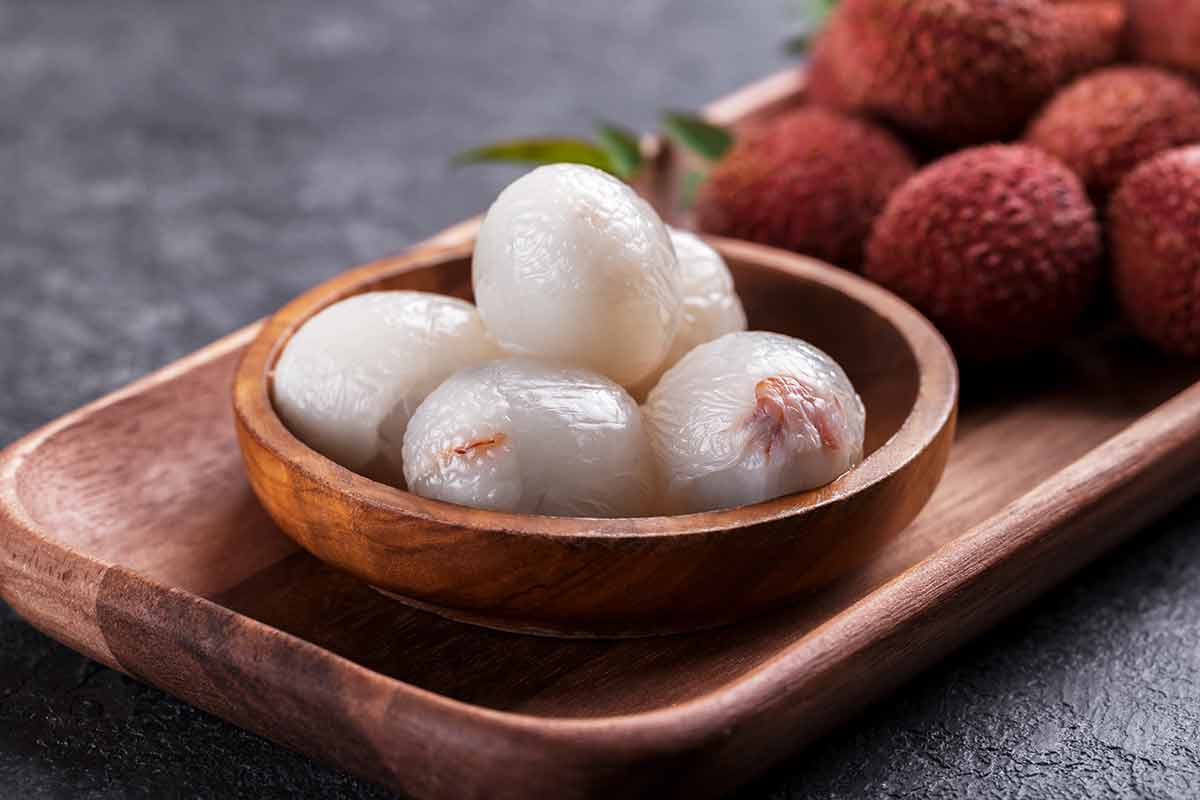
Lychee (Litchi chinensis) belongs to the soapberry family and is native to Southern China.
The fruit has sweet, translucent flesh and is a popular dessert, consumed fresh, dried or canned. Have you tried lychee martinis?
Lychees are one of the most popular Asian fruit in China’s southern provinces.
19- Mango
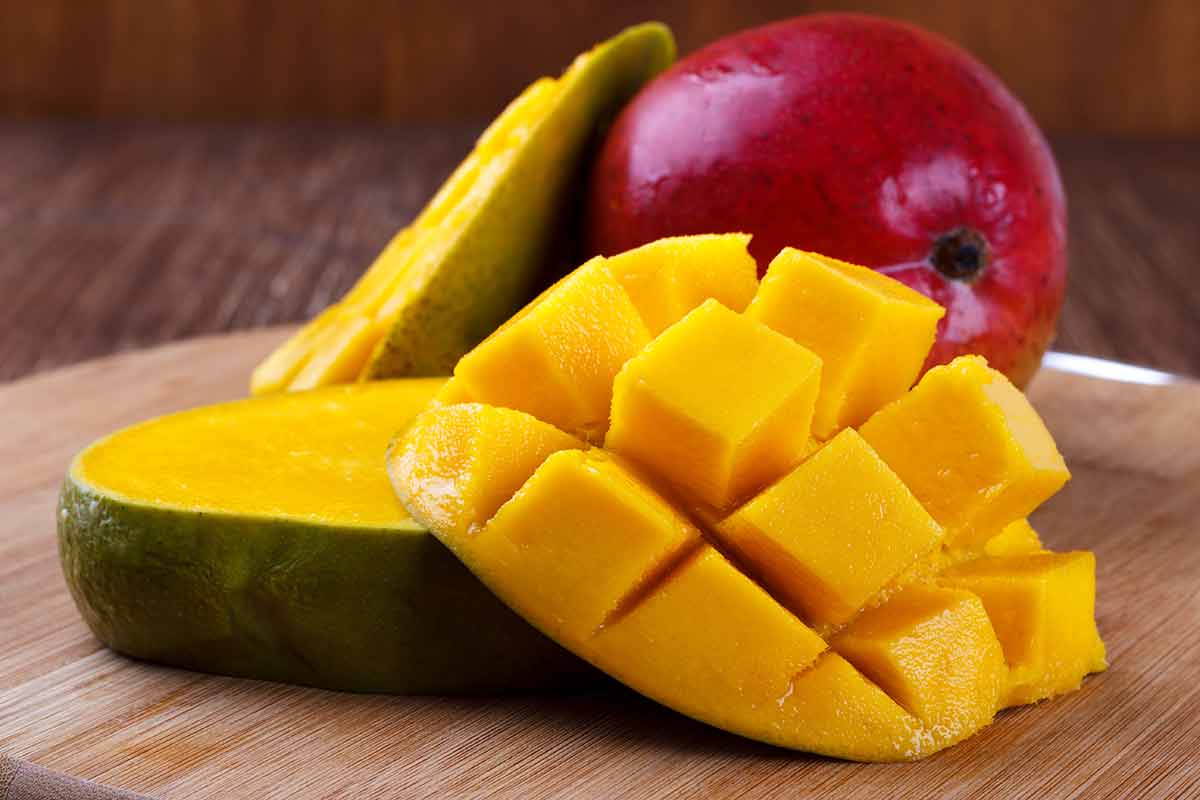
Mangoes are synonymous with summer, and they fill supermarket shelves around the world as the temperature begins rising.
There are hundreds of types of mangoes, and they are grown throughout Asia.
The sweet stone fruit produced by the Mangifera indica tree is believed to have originated somewhere in northwestern Myanmar, Bangladesh and northeastern India area.
Mughal emperor, Akbar, planted over 100,000 mango trees in Lakhi Bagh, and today, India is the world’s top mango producer.
The country produces around 50% of the world’s mangoes and has hundreds of varieties. China and Thailand are also large mango producers.
20- Mangosteen
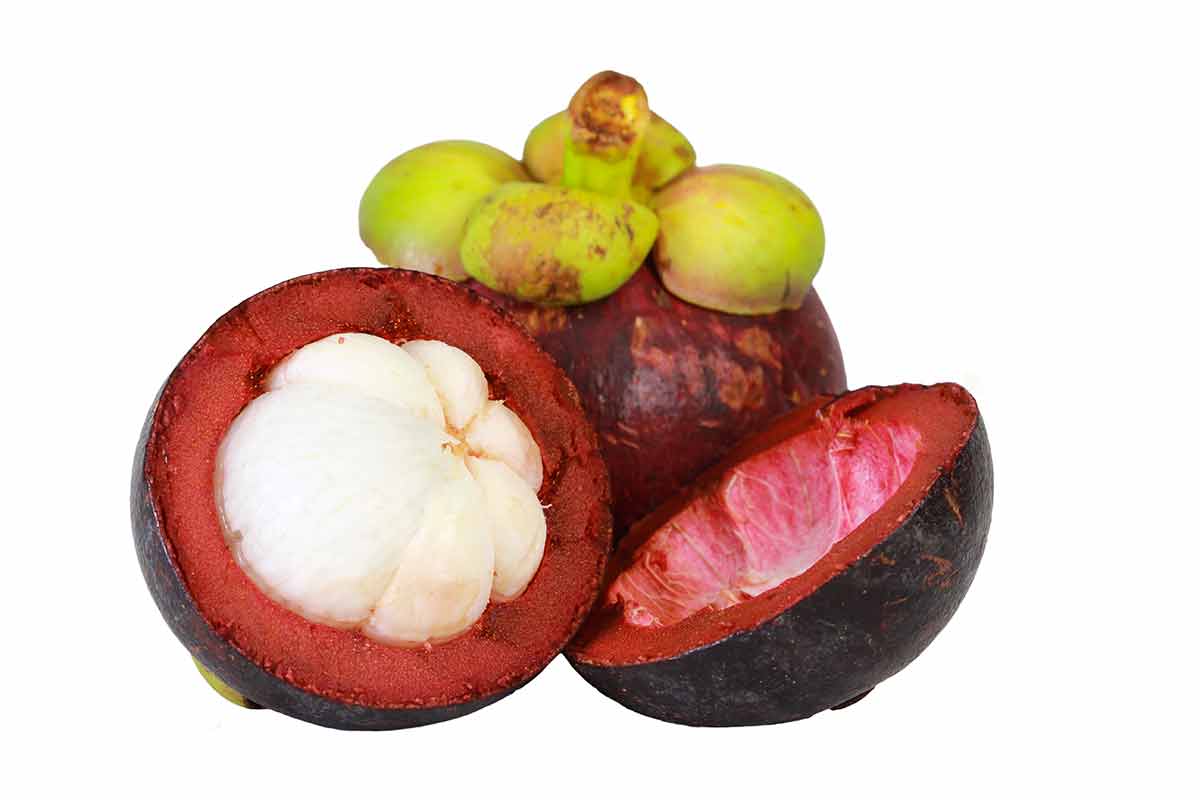
Mangosteen (Garcinia mangostana) is a Southeast Asian tropical fruit known as the queen of tropical fruit.
They are the size of small apples and have thick, leathery purple-coloured skin.
Its white segmented flesh is incredibly sweet and tastes like a cross between peach and lychee.
Mangosteens are available in Thailand, Malaysia, Singapore and other parts of Southeast Asia by the bagful for a few dollars, while in many other countries, they are an exotic Asian fruit.
21- Meyer Lemons
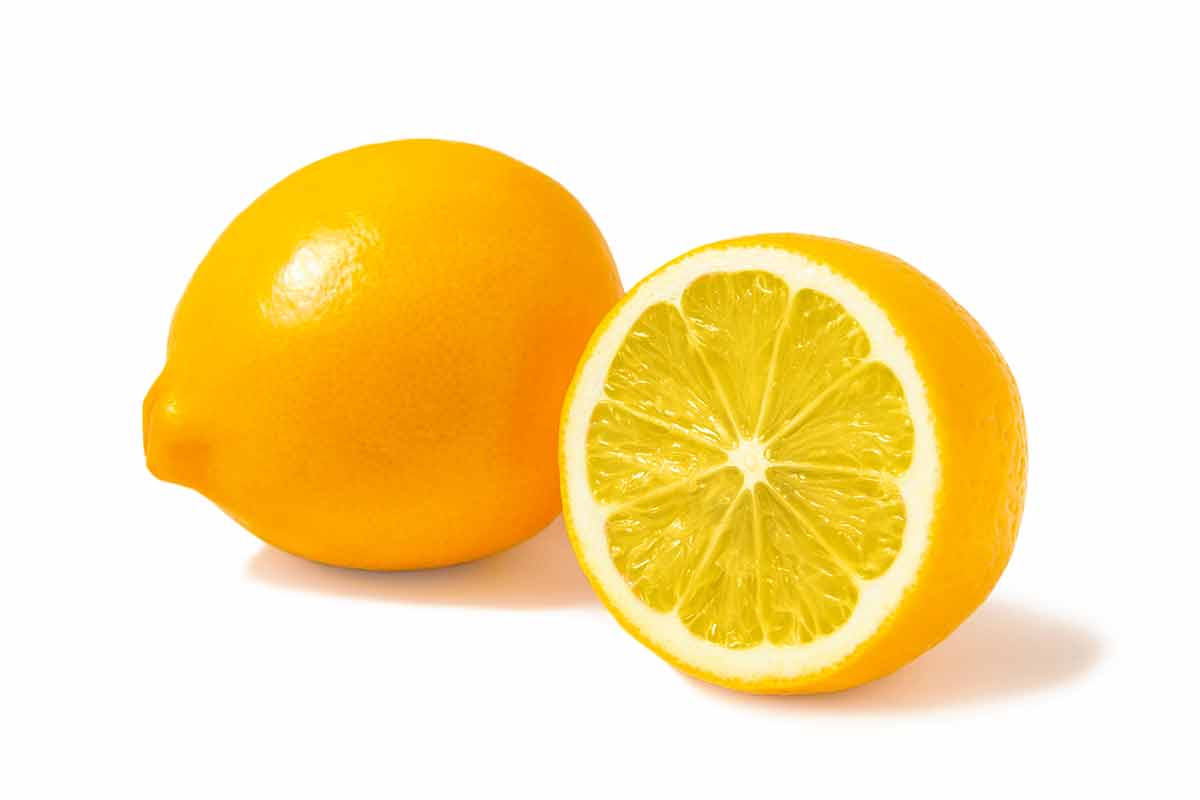
American agriculturalist Frank N. Meyer found these lemons in China, used as houseplants for decorative purposes.
The Meyer lemon (Citrus × meyeri) is a cross between a mandarin/pomelo hybrid and a regular lemon, with a smooth yellow peel.
Meyer lemons are about the same size as a regular lemon but are sweeter than ordinary lemons, and the peel is thinner and not as bitter.
The Meyer lemon became popular when well-known chefs like Martha Stewart started including them in recipes.
22- Mosambi
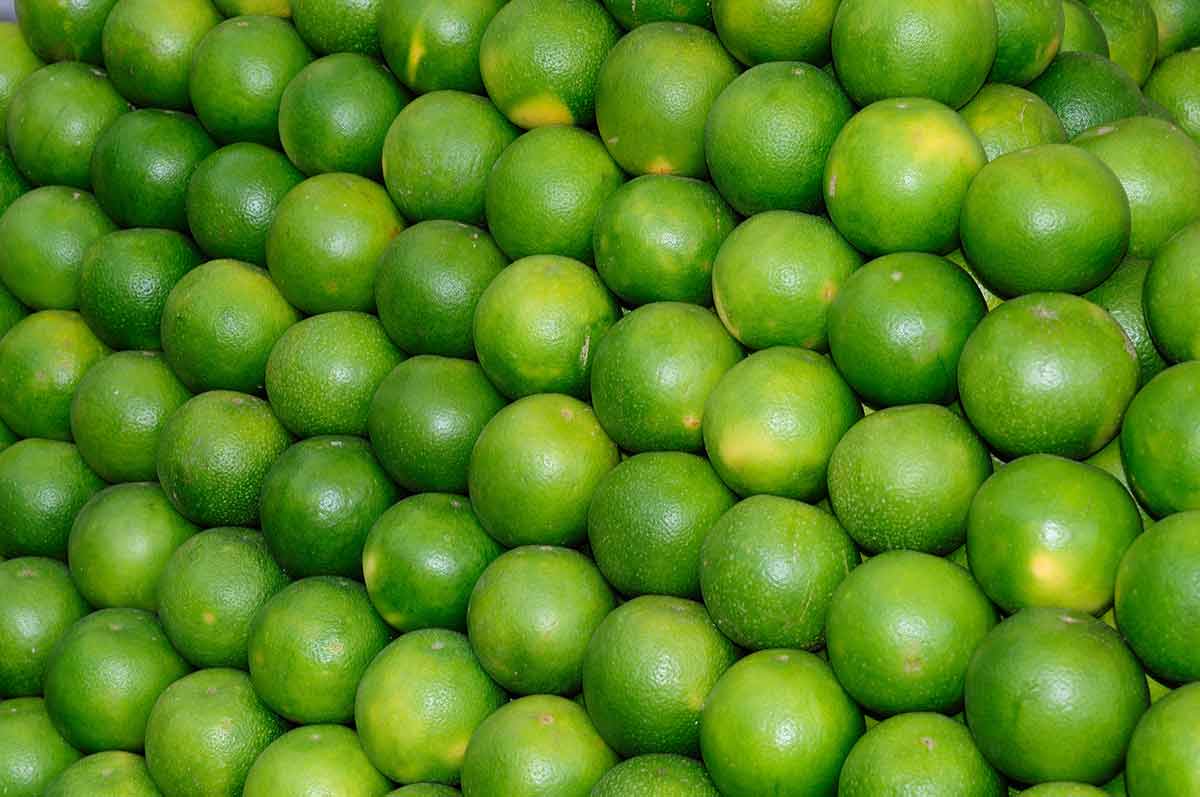
Mosambi (citrus limetta) or sweet lime or sweet lemon is a small round fruit that looks like a regular lime.
Citrus limetta grows in tropical and subtropical regions and despite belonging to the citrus family, it’s not acidic.
It’s usually used to make juice in Asia and is believed to have health benefits, including aiding digestion, constipation and strengthening the immune system.
23- Papaya and Paw Paw
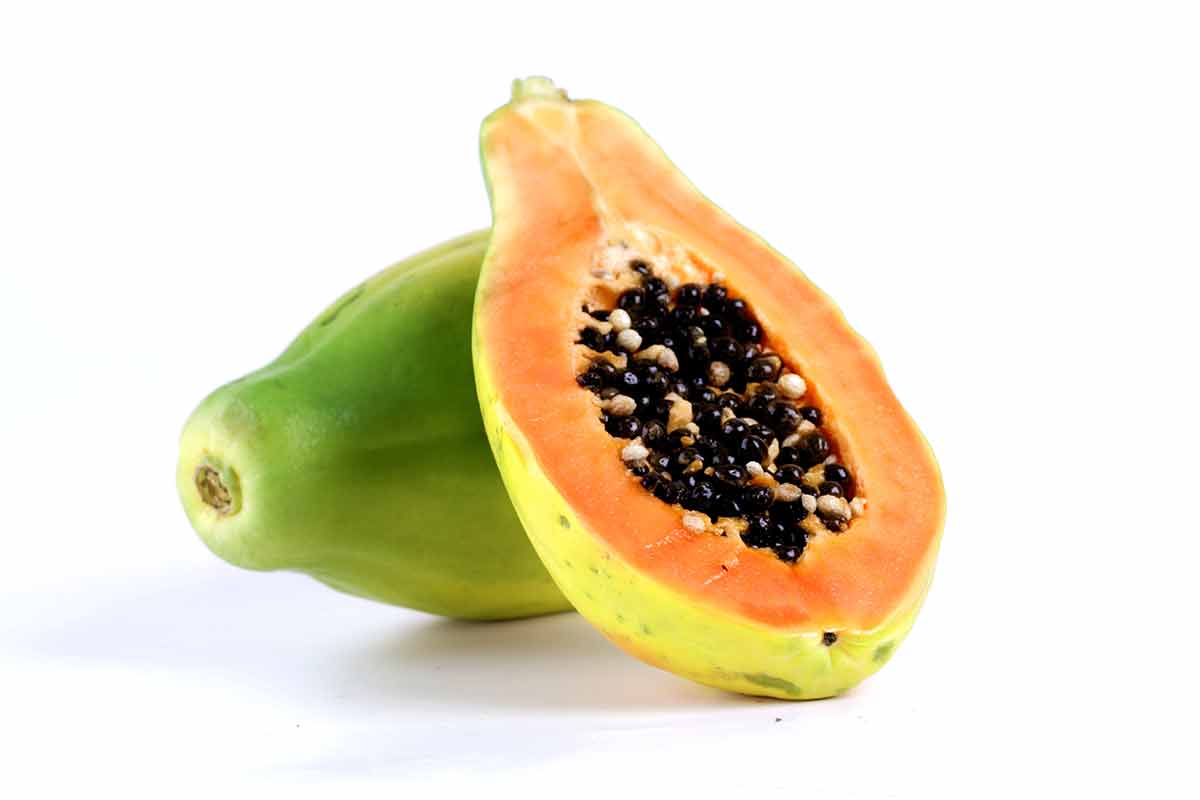
The papaya, papaw or pawpaw is a vitamin C-rich fruit full of other vitamins like A, B and K.
Discovered during Christopher Columbus’ time in South America, papayas are also grown in Asia, Central America and Africa.
Ripe papaya fruit is a yellow-orange colour and its sweet flesh ranges from yellow to dark orange.
In Asia, papayas are eaten raw, in fruit salads, salads or blended as juice.
24- Passion fruit
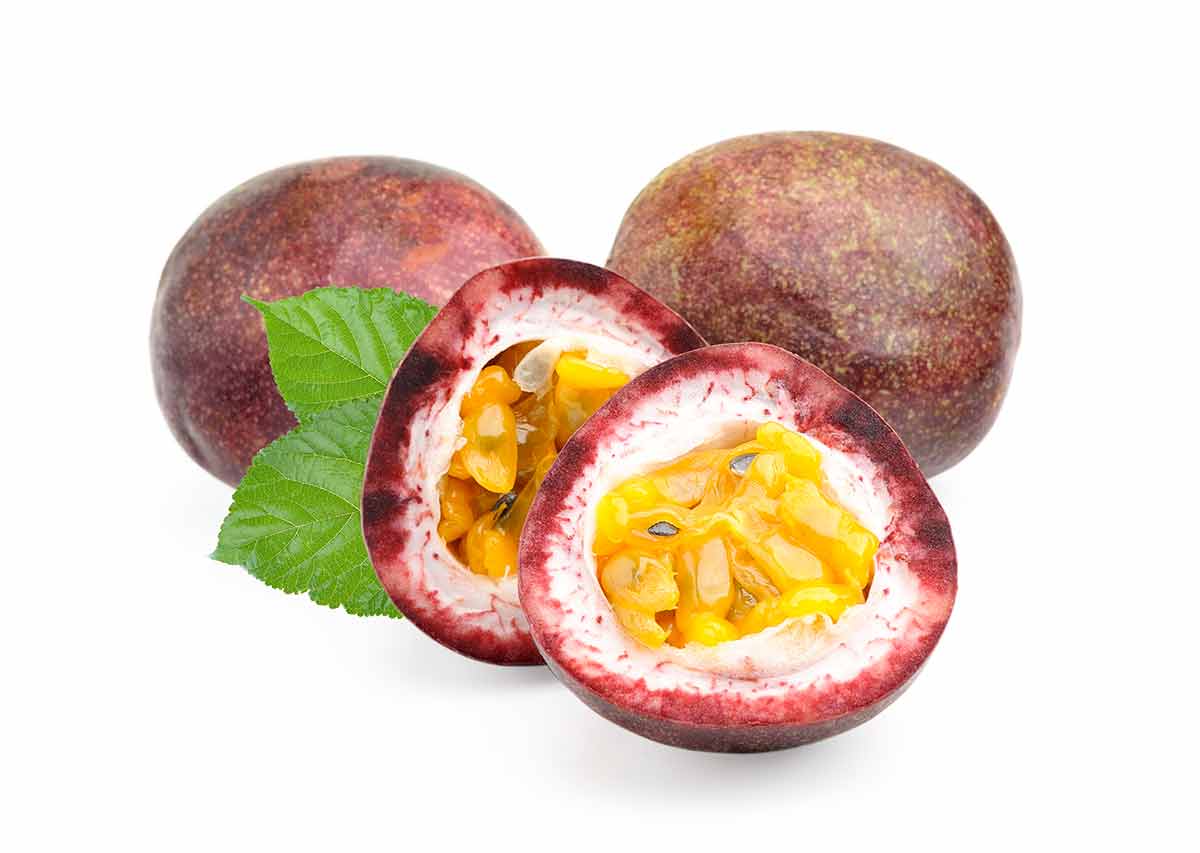
Passionfruit (Passiflora edulis) is native to Brazil, Paraguay and Argentina.
The fruit is cultivated commercially in tropical and subtropical areas.
You can eat the passionfruit pulp and seeds straight from the shell.
Its aromatic flavour makes it popular as an ingredient in desserts and juices.
25- Pineapple
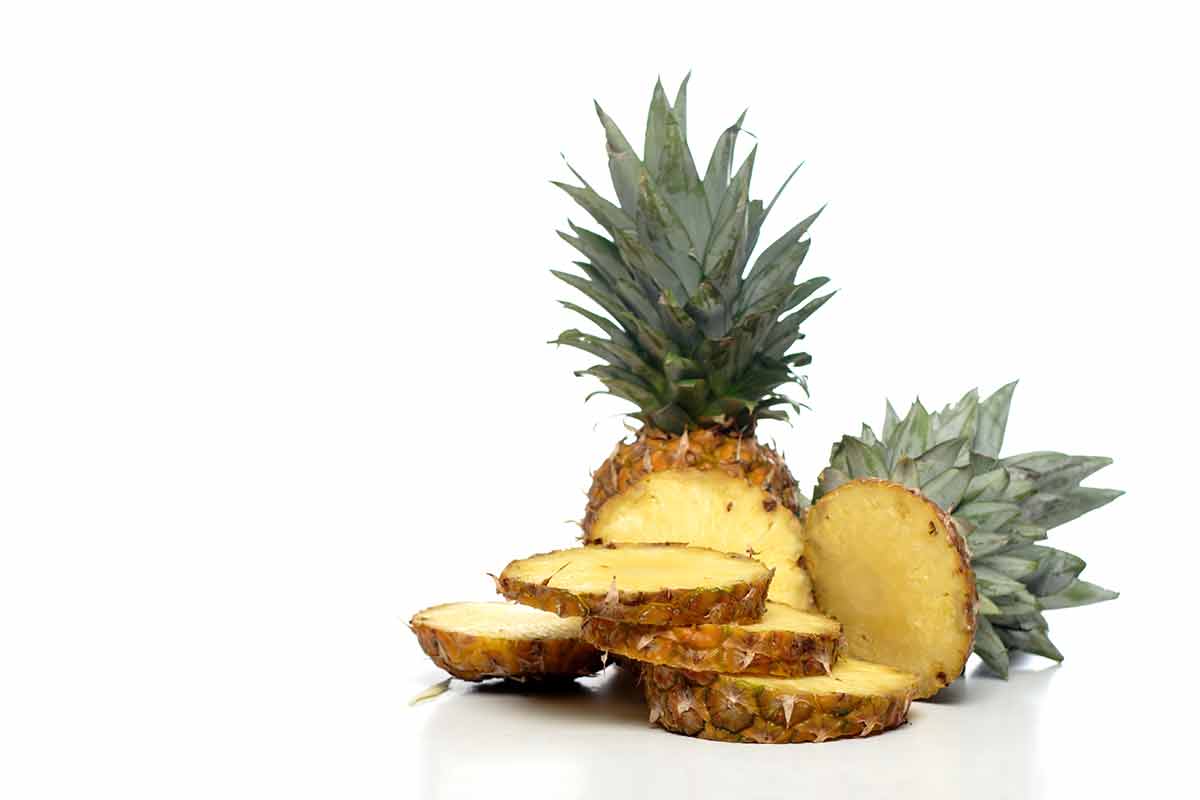
The pineapple (Ananas comosus) is a tropical plant with an edible fruit rich in vitamins, enzymes and antioxidants.
The Philippines and Thailand are significant producers of pineapple.
Popular pineapple dishes in Asia are pineapple fried rice (Thailand), Hamonado (Philippines), meat marinated and cooked in a sweet pineapple sauce, and Afritada (Philippines) stew cooked with pineapple.
26- Pomelo
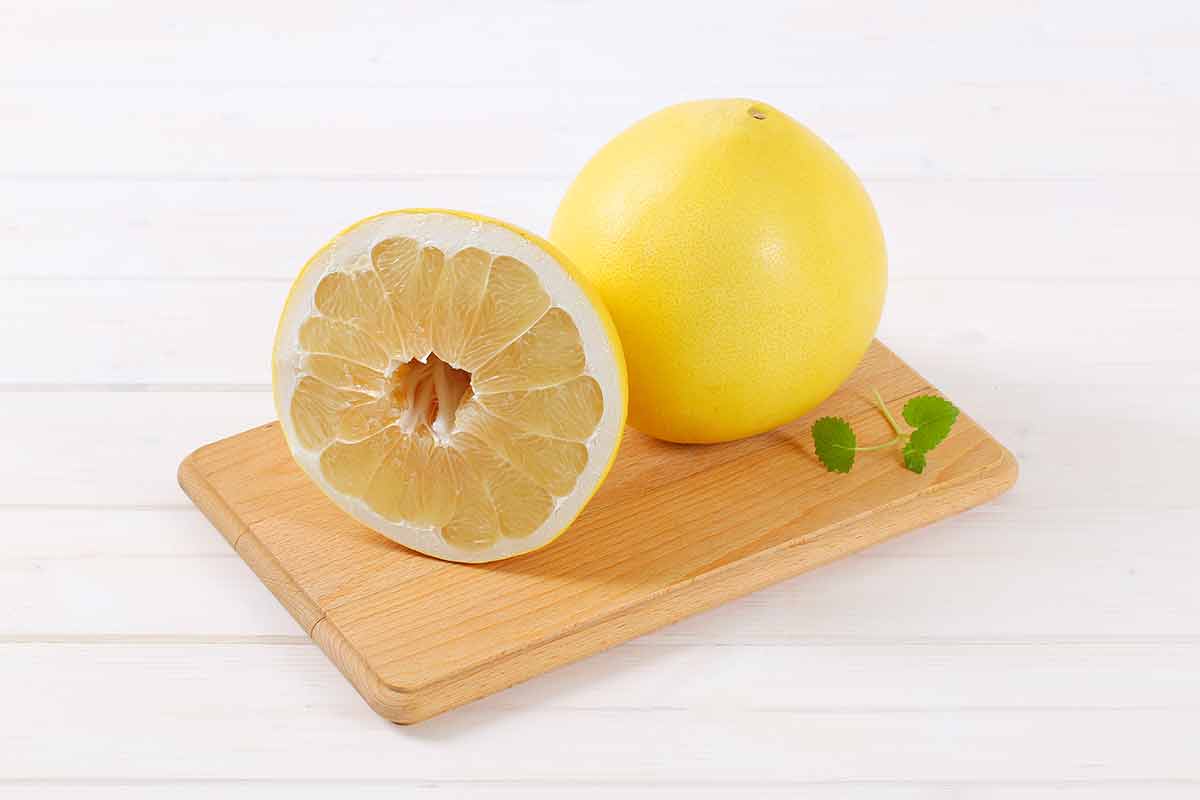
Native to Southeast Asia, pomelo is a larger and sweeter version of grapefruit.
The pomelo (Citrus maxima or Citrus grandis) is the largest of the citrus fruits and has a sweet, sour and bitter taste great for using to make jam and desserts.
Pomelos are grown commercially in Thailand, other parts of Southeast Asia and China.
27- Rambutan
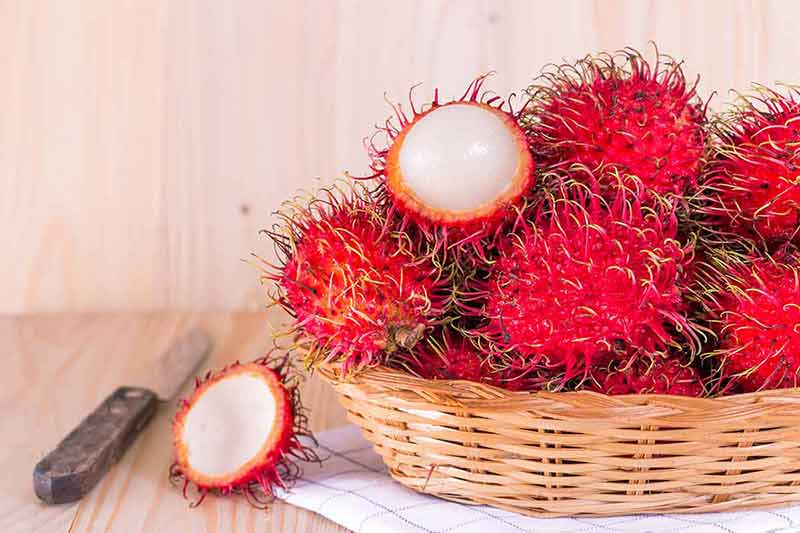
Rambutan (Nephelium lappaceum) is native to Malaysia and means ‘hair’ because of the spiny hairs on the fruit’s red skin.
The hair is green at first but turns red after a few days it has been picked and the white flesh is delicious when eaten raw.
Thailand produces half of the world’s rambutan for the fresh market and canning industry.
28- Sapodilla
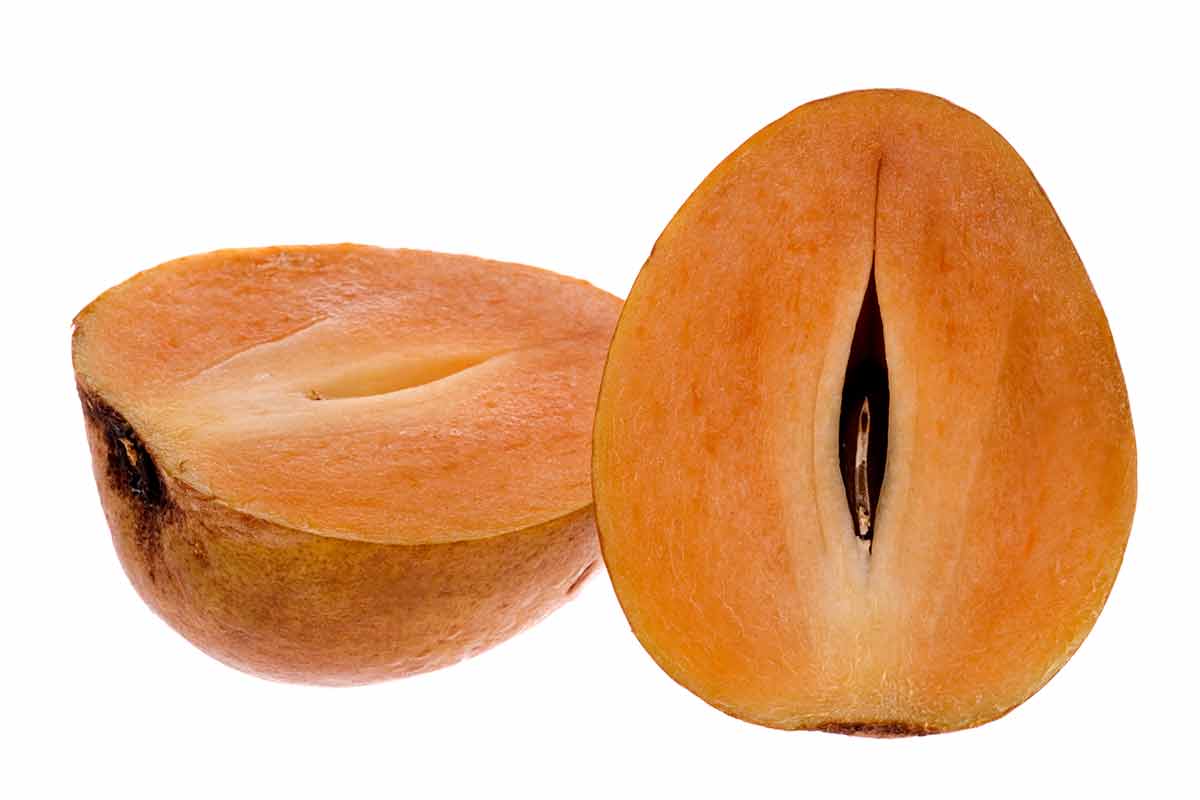
Sapodilla (Manilkara zapota) or ciku is a tropical tree from Mexico and Central America with a distinctive fruit.
The tree grows well in Southeast Asia and the fruit has delicate flesh with colours ranging from pink to red based on the variety.
The fruit is brown and it looks like a potato on the outside, with brown sugary flesh under the skin.
29- Snake Fruit
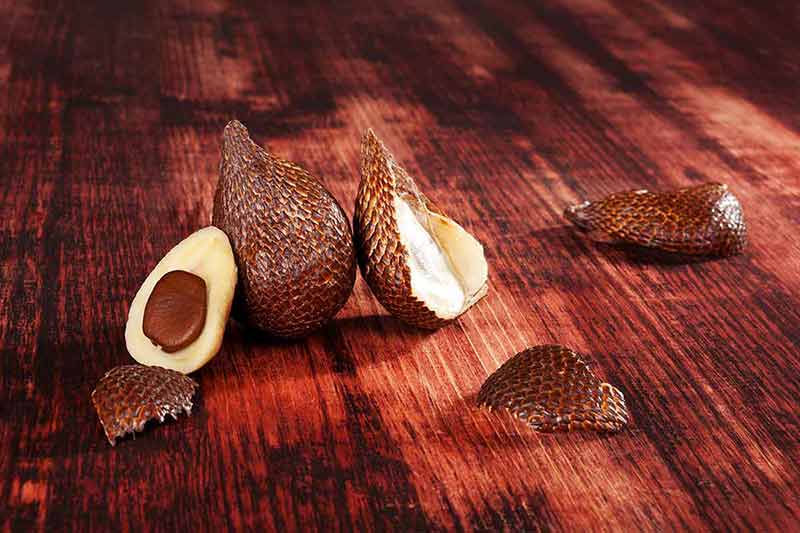
Snake fruit or salak is a type of palm tree found in Indonesia and cultivated as a food crop.
Snake fruit is about the size of a fig and has a similar shape, with red-brown skin and tapering at the ends.
The flesh is juicy, sweet and sour and looks similar to large peeled cloves of garlic.
The flavours are a blend of banana, apple and pineapple.
Rich in potassium and pectin, this Asian fruit is known as the ‘fruit of memory’ for the nutrients that are good for the brain.
30- Star fruit
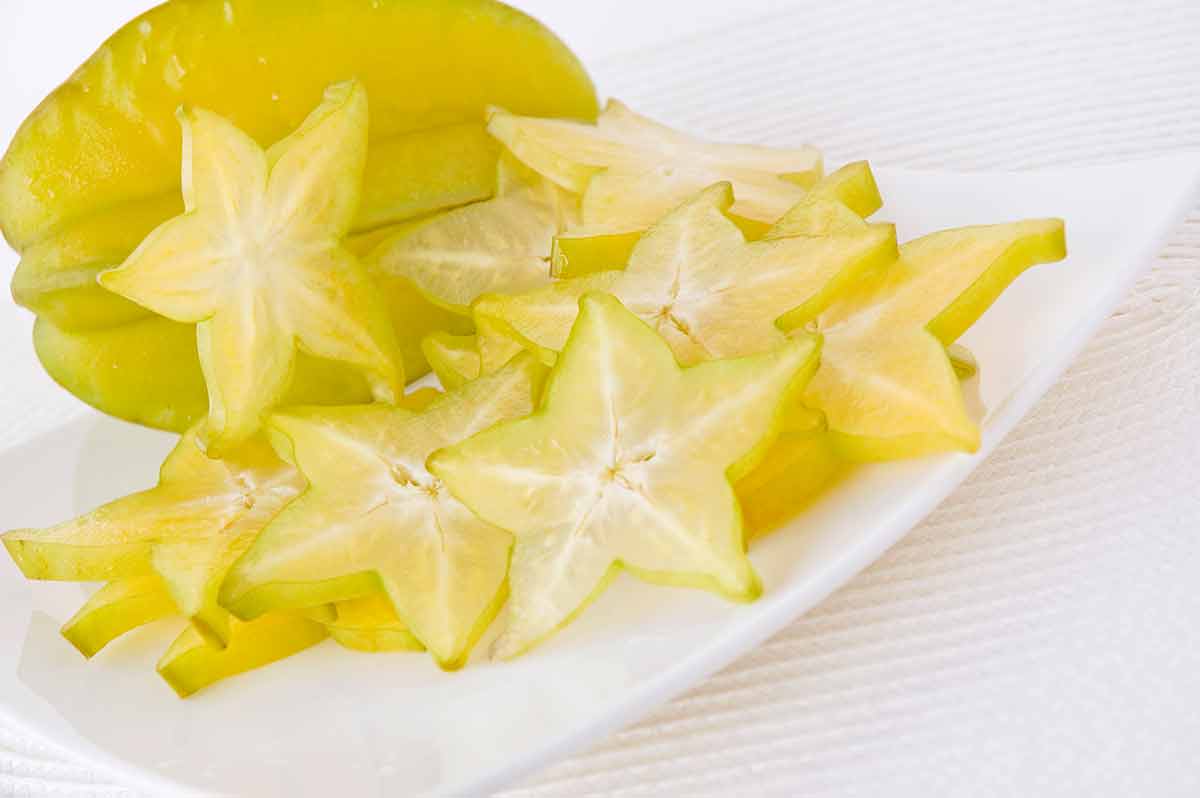
Star fruit (Averrhoa carambola) is a sweet and sour Asian fruit shaped like a five-point star.
The crunchy fruit has light green edible skin and mild-flavoured flesh with small dark seeds in the centre.
This green Asian fruit originated in Sri Lanka or Indonesia and spread throughout Asia, now common in Southeast Asia, southern China, India and the Philippines.
31- Sugar Apple
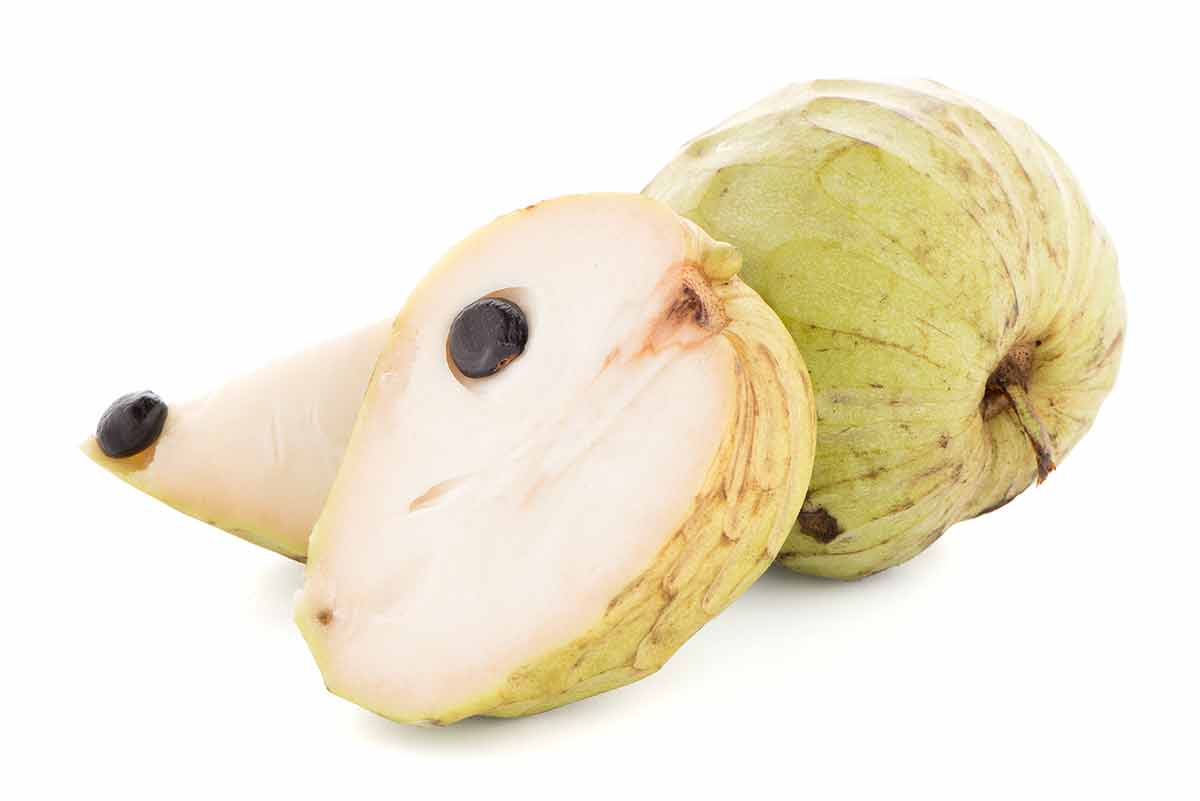
Sugar Apple (Annona squamosa) or Custard Apple or sweet-sop is a native of the Americas and West Indies.
Spanish traders brought this fruit to Asia and sugar apples are usually eaten raw but in Malaysia, the flesh is made into a puree to add to ice cream.
Sugar apples have knobbly green or red skin on the outside and have creamy yellow or white flesh that tastes like custard.
32- Tamarind
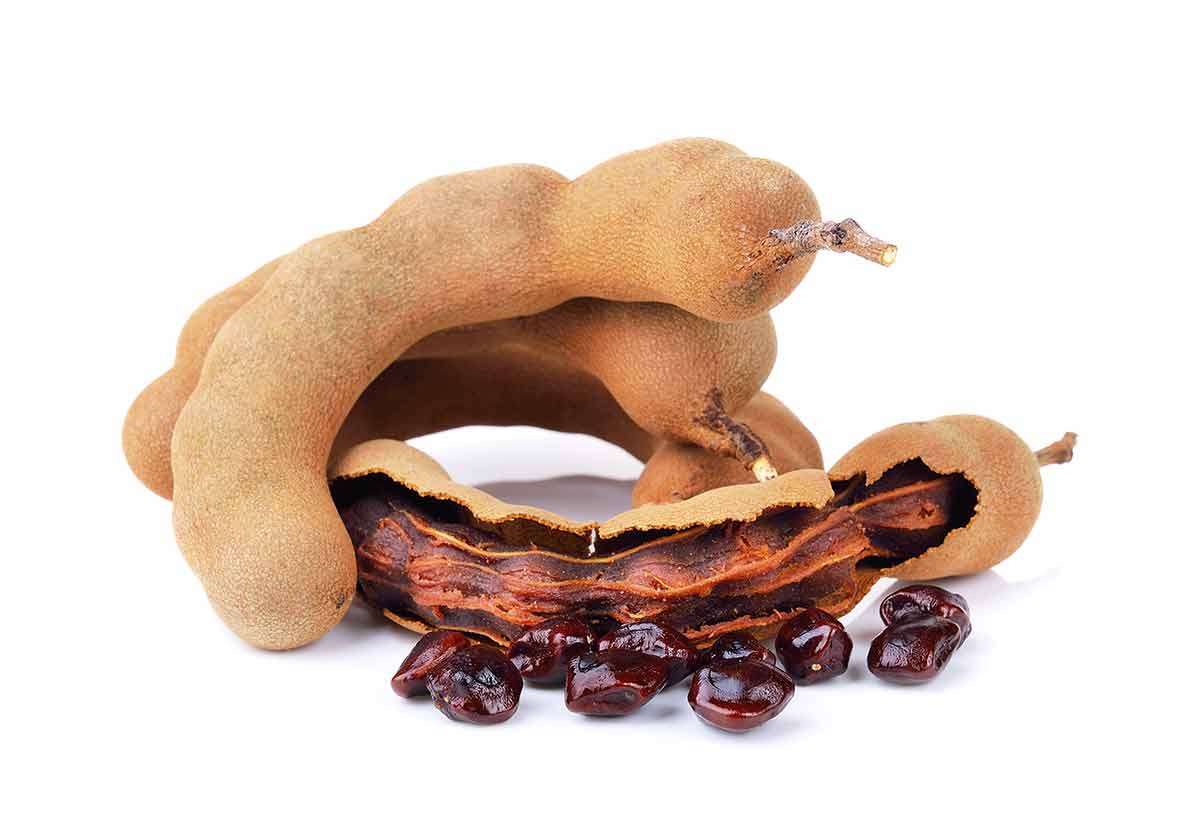
Tamarind (Tamarindus indica) is the fruit from a hardwood tree native to India, Pakistan and North Africa.
The sweet and tangy fruit is used in many traditional dishes, including Tamarind chutney.
Tamarind pulp is used in various ways, from oral medicine to metal polish.
33- Wax Apples
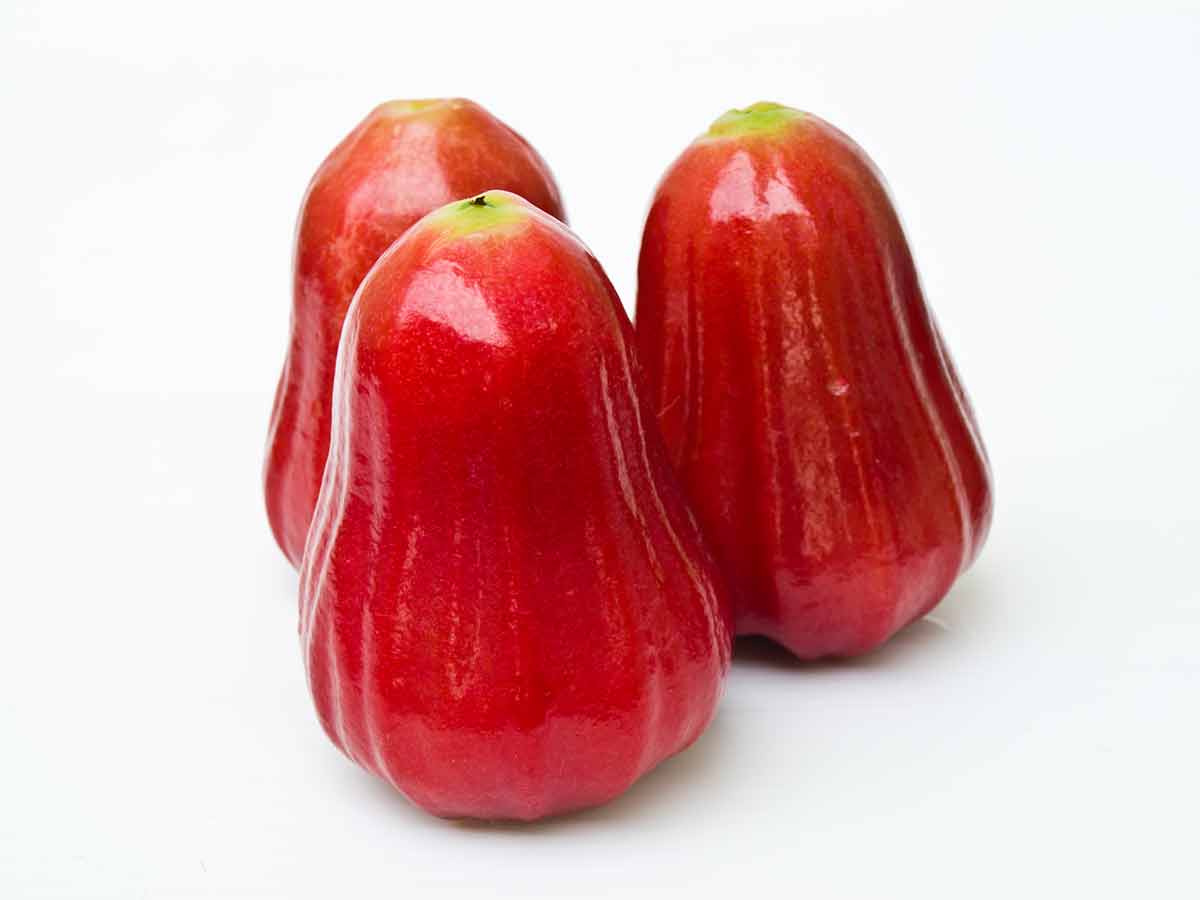
Wax apples (Syzygium samarangense) or jambu area bell-shaped fruit grown in Malaysia.
Ripe wax apples are light red on the outside and taste like nashi pear.
It’s a thirst quencher and has a bland flavour that can be enhanced with sugar or spices.
More Landmarks in Asia:
Plan Your Trip

Rent A Car – Find the best car rental rates at Discover Cars. They compare car hire companies to provide you with the best deal right now.

Find A Hotel – If you’re curious about this article and are looking for somewhere to stay, take a look at these amazing hotels.

